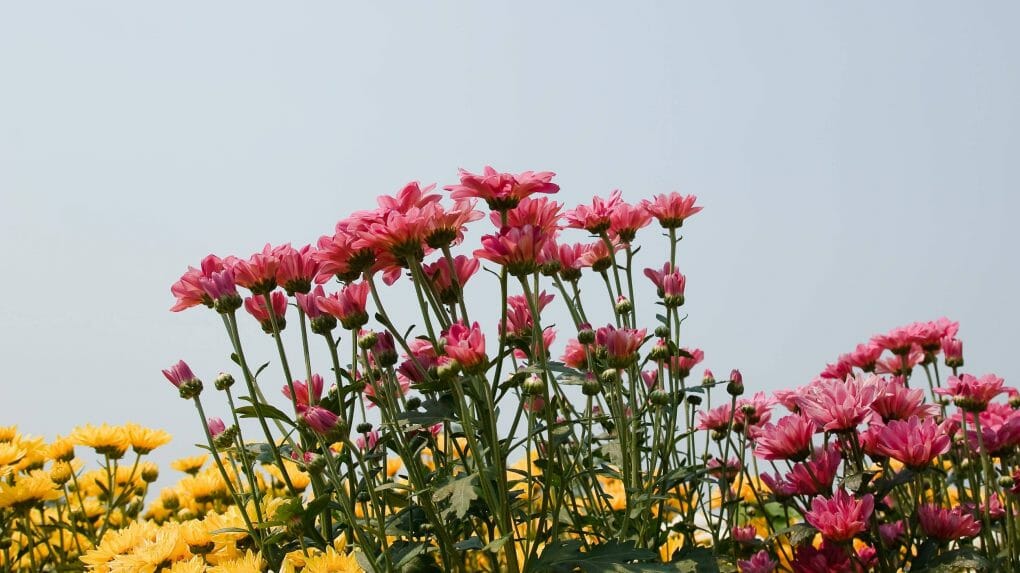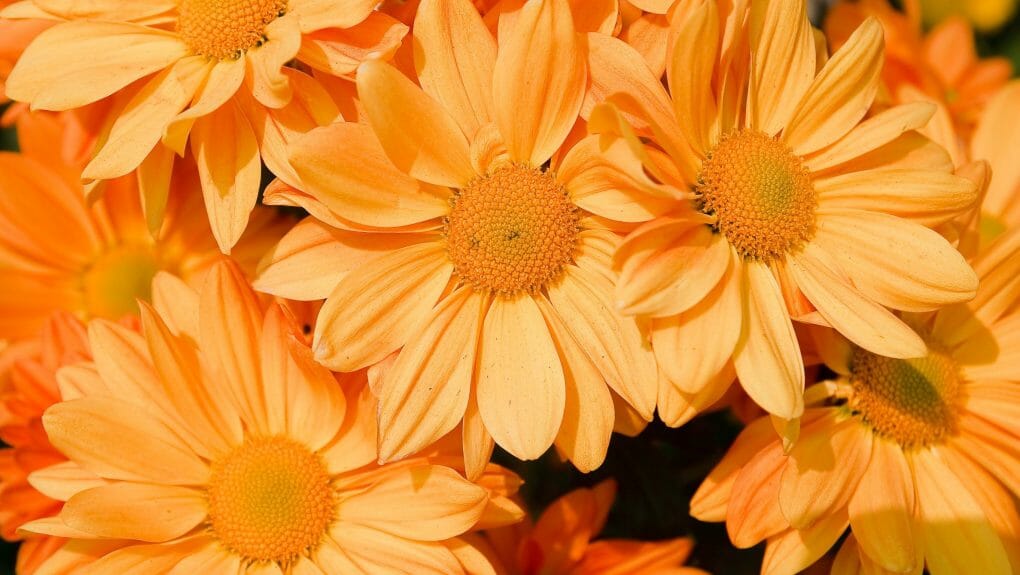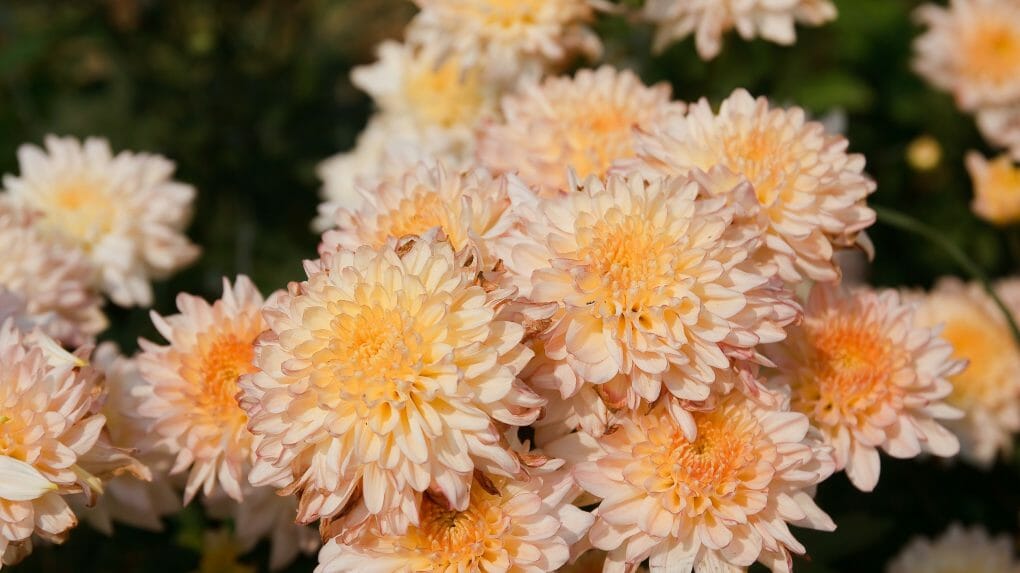How Long Do Chrysanthemums Bloom? Keeping Your Bloom Last Longer
Each flower lasts two to three weeks, depending on the light and weather. You can keep your mums blooming until it gets cold by cutting off the spent flowers as soon as they start to die. Early bloomers usually bloom around the end of July, early fall bloomers start to show off their flowers in September, and late fall bloomers start to show off their beautiful colors in October. Each kind of mum is different, but most will keep blooming for four to eight weeks. Chrysanthemums only live for three to four years, and even if they do, they are more vulnerable to winter damage each year after that.

There are many ways to make chrysanthemums bloom longer. Your mums will bloom longer and more often if you cut off the spent flowers, fertilize them in the spring, and keep them from being too close.
Table of Contents
Keeping Your Blooms Last Longer
Mums in the garden should live for a few years, but there are things you can do to speed things up. To give your garden mums the best chance of establishing themselves, be sure to plant them in the spring. Put them in a location where they will be exposed to the sun directly. Throughout the growing season, prune your plant to encourage more dense, fuller blossoms and to direct more energy toward root development. Until the first frost, water continuously. Some of the growth will die with the first frost, so you should remove it. Even cutting the plant to the ground is advised by some gardeners. Whichever option you select, be sure to mulch the plant heavily. Pull back the mulch in the spring when it starts to warm up. You should begin to notice quick new growth. Of course, not every plant survives the winter, even if it is a perennial.
Deadheading
Chrysanthemum plant maintenance is incomplete without deadheading. By deadheading, you prevent the spent blooms from pollinating other blossoms and developing seed pods by removing them from the stem. This stops undesirable plants and pollen from creating new chrysanthemums, which might disturb the balance of your garden.
This action is required to maintain the plant’s health and ability to flower. Since you won’t have to water them as frequently or fertilize them as often, doing this will help save your maintenance costs.
Chrysanthemums thrive in light shade, but direct sunshine can cause the blossoms to wilt and become brown. It’s crucial to deadhead chrysanthemums during peak hours at least twice a week to attain the appropriate hue between 10 am-2 pm. You may not need to deadhead your plants more frequently than once every two weeks if you live in an area that gets a lot of indirect light throughout the day.
Remove Old Stems
During the summer, a chrysanthemum plant typically produces lovely, white flowers. But in the long run, you’ll save a ton of time and hassle if you cut old stems off your chrysanthemums before they flower.

Without harming or killing the plants, removing stems older than two months can be challenging. When removing old stems, it’s crucial to use the right methods because they frequently have roots deep into the soil. When a stem is cut just above the ground, it could hurt downstream. Before removing any undesirable material with force, try using a Bobcat claw hammer or digging out with a spade. A seasoned gardener is something else you might think about hiring.
Pinching
To increase flower production, pinch the stems of your mum in the spring. When a shoot is five to six inches long, just above the leaves and two to three inches down the stem, pinch off the tip. The stems can be pinched once more when they are another five to six inches tall. Additional stems will grow from each pinched stem. Continue this process until July, when the growth cycle naturally slows down. The plant will develop more branches, become fuller, and produce more flowers.
Water
Chrysanthemums should only receive the water necessary to support their growth cycle. In the summer, keep the water content around 50% to prevent soil from drying out due to excess water.
Chrysanthemums should be watered outside in the early morning or late afternoon when the sun isn’t directly overhead. Ample drainage should be present around your plant, and the soil should be moist but not wet. Chrysanthemums should only be watered indoors if the pot has new soil and just enough water to cover the rootball barely. Welded flowers and dropped leaves are the results of excessive or insufficient watering.
Fertilizer
Fertilizing Chrysanthemum is an essential part of managing these plants’ care. A balanced fertilizer schedule will help provide the nutrients your chrysanthemums need to grow healthy flowers and foliage. Follow these tips for a successful fertilization campaign:

- Start by assessing your needs. This involves understanding what type of plant you have, how much it grew last year, and how much it might grow this year. Once you know these things, you can decide on the right type of fertilizer for the situation.
- Choose a formula that’s low in nitrogen and high in phosphorus. This will help promote flower bud development while minimizing vegetative growth and leaf lushness (chlorosis). Phosphorus is important because it helps develop root systems and makes leaves strong enough to withstand weather conditions such as wind or frost damage.
- Mix the correct amount into the water at planting time so that soil contact occurs throughout the potting process. Be sure not to over-fertilize since too much nitrogen can lead to weed problems later on down the road!
Mulching
Chrysanthemums are heavy feeders, so adding a layer of mulch around the plants will help them take up less water while growing. Make sure the mulch is neither too dry nor too wet and that it blocks sunlight from reaching the roots. A few inches of mulch placed around the mums will do the trick. Clean straw, evergreen branches, and weed-free pine needles are all great options for mulching. Mulch made of leaves is ineffective because it compacts and doesn’t shield plants from the elements. Before the mulch decomposes in the first half of April, you should cut away any dead foliage.
